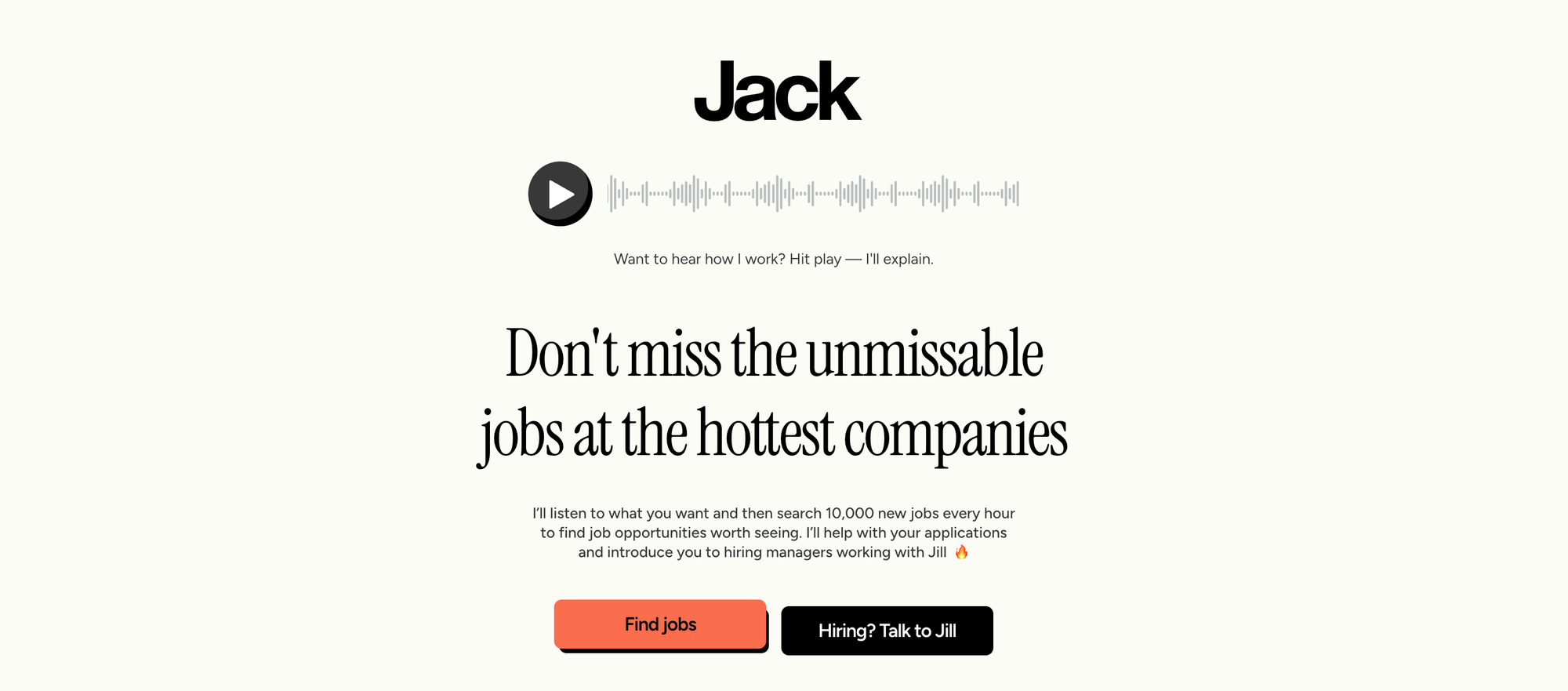AI Recruiting Marketplaces Are Back, This Time AI-Powered

TL;DR: A new wave of AI-powered recruiting marketplaces, like Jack & Jill, Dex, and Standout is reinventing how candidates and companies connect. AI slashes ops costs and improves matching, but the hardest problems remain: balancing supply/demand in cyclical markets, scaling curation without losing quality, and competing with LinkedIn’s gravity.
This article breaks down what’s new, what hasn’t changed, and who these platforms are most likely to disrupt.
What’s new this time?
Conversational onboarding, not forms.
- Candidates speak with an AI (voice/WhatsApp) that asks smart questions and builds a structured profile, no CV upload or long forms.
- Employers describe the role to an AI, which translates intent into structured requirements.
- Matching runs automatically with LLMs and richer context. Dex positions itself as an AI talent partner for engineers, while Standout pitches a “personal AI headhunter” on WhatsApp.
Why the last wave stumbled (Hired, Vettery, talent.io)
We’ve seen this movie: reverse marketplaces boomed then hit a wall.
- Chicken & egg in a cyclical market. When hiring slows or candidate supply surges, one side leaves and the flywheel stops.
- High burn & fragile unit economics. Big teams, high ops costs, and expensive acquisition models left little margin.
- Two brands to build. B2B + B2C acquisition is extremely costly.
- Curation doesn’t scale cleanly. Keeping quality high becomes exponentially harder with volume.
Additional context: Vettery and Hired consolidated; talent.io went through a difficult period as the market tightened.
Why it could work now
AI changes everything about the cost structure and the experience.
▪️ Ops costs shrink dramatically
Support, matching, screening, and curation become software-heavy rather than people-heavy.
▪️ Better matching quality
LLMs + structured data + improved tooling create far deeper context understanding than the matching systems available in 2016–2020.
▪️ Human-like AI agents improve trust
Persona-based conversational agents (like those used by Jack & Jill) create brand affinity far beyond static job boards.
▪️ Candidate flow is frictionless
Voice and chat-based onboarding aligns with modern behavior and drastically increases completion rates.
But the challenges remain huge
- Balancing supply & demand in a market that cycles violently every 18–24 months
- Scaling while maintaining quality
- Competing with LinkedIn, which continues to absorb job-board budgets and traffic
These structural challenges haven’t disappeared.
My take: they won’t replace recruiters, they’ll replace job boards
Many new platforms say they will replace agencies.
I think the opposite.
✔ If they succeed, they will take share from job boards. Job boards target active candidates, people already applying. AI marketplaces create a much better experience for this same audience.
✔ But the passive talent market stays human. Passive candidates — the majority of the market — require: trust, domain expertise, network, advisory, nuanced assessment, and discretion. AI can assist, but it cannot replace this layer. Recruiters (in-house and agency), especially specialists, remain essential, now augmented by AI, not replaced.
Quick evaluation criteria for buyers
If you're evaluating an AI marketplace:
- Candidate acquisition (organic vs. paid)
- Structured data depth
- Matching transparency & controls
- Human-in-the-loop quality checks
- Economics vs. your cost-per-interview
- ATS/CRM integrations
- Brand trust & candidate experience
Notable players to watch
- Jack & Jill – AI agents for candidates and employers
- Dex – AI talent partner for engineering roles
- Standout – “Personal AI headhunter” via WhatsApp
Final takeaway
AI recruiting marketplaces will work better this time.
But success will come from displacing job boards, not from replacing recruiters. Recruiting agencies, especially niche and high-touch ones, keep their place, but with more leverage, more automation, and far better tools.


